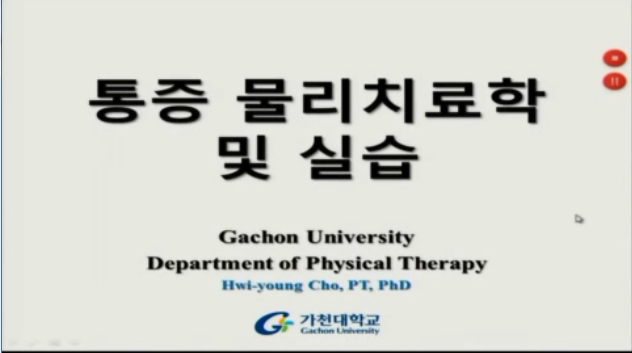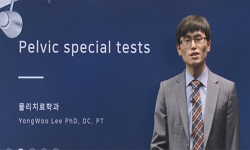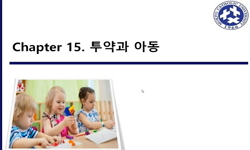Itch and pain are distinct sensations that share anatomically similar pathways: from the periphery to the brain. Over the last decades, several itchspecific neural pathways and molecular markers have been identified at the peripheral and spinal cord l...
http://chineseinput.net/에서 pinyin(병음)방식으로 중국어를 변환할 수 있습니다.
변환된 중국어를 복사하여 사용하시면 됩니다.
- 中文 을 입력하시려면 zhongwen을 입력하시고 space를누르시면됩니다.
- 北京 을 입력하시려면 beijing을 입력하시고 space를 누르시면 됩니다.



Multiplexed Representation of Itch and Pain and Their Interaction in the Primary Somatosensory Cortex
한글로보기https://www.riss.kr/link?id=A108341782
-
저자
우승희 (경희대학교) ; Kim Yoo Rim (Department of Physiology, Seoul National University College of Medicine, Seoul 03080, KoreaNeuroscience Research Institute, Seoul National University College of Medicine, Seoul 03080, Korea) ; Bak Myeong Seong (Kyung Hee University) ; Chung Geehoon (Kyung Hee University) ; Kim Sang Jeong (Seoul National University College of Medicine) ; Kim Sun Kwang (Kyung Hee University)

- 발행기관
- 학술지명
- 권호사항
-
발행연도
2022
-
작성언어
English
- 주제어
-
등재정보
KCI등재,SCOPUS,SCIE
-
자료형태
학술저널
-
수록면
324-331(8쪽)
- DOI식별코드
- 제공처
-
0
상세조회 -
0
다운로드
부가정보
다국어 초록 (Multilingual Abstract)
Itch and pain are distinct sensations that share anatomically similar pathways: from the periphery to the brain. Over the last decades, several itchspecific neural pathways and molecular markers have been identified at the peripheral and spinal cord levels. Although the perception of sensation is ultimately generated at the brain level, how the brain separately processes the signals is unclear. The primary somatosensory cortex (S1) plays a crucial role in the perception of somatosensory information, including touch, itch, and pain. In this study, we investigated how S1 neurons represent itch and pain differently. First, we established a spontaneous itch and pain mouse model. Spontaneous itch or pain was induced by intradermal treatment with 5-HT or capsaicin on the lateral neck and confirmed by a selective increase in scratching or wiping-like behavior, respectively. Next, in vivo two-photon calcium imaging was performed in awake mice after four different treatments, including 5-HT, capsaicin, and each vehicle.
By comparing the calcium activity acquired during different sessions, we distinguished the cells responsive to itch or pain sensations. Of the total responsive cells, 11% were both responsive, and their activity in the pain session was slightly higher than that in the itch session. Itch- and painpreferred cells accounted for 28.4% and 60.6%, respectively, and the preferred cells showed the lowest activity in their counter sessions. Therefore, our results suggest that S1 uses a multiplexed coding strategy to encode itch and pain, and S1 neurons represent the interaction between itch and pain.
1 Bautista DM, "Why we scratch an itch: the molecules, cells and circuits of itch" 17 : 175-182, 2014
2 Liu XY, "Unidirectional crossactivation of GRPR by MOR1D uncouples itch and analgesia induced by opioids" 147 : 447-458, 2011
3 Liu Y, "Touch and tactile neuropathic pain sensitivity are set by corticospinal projections" 561 : 547-550, 2018
4 Ikoma A, "The neurobiology of itch" 7 : 535-547, 2006
5 Carstens E, "The challenge of basic itch research" 100 : 2020
6 Imamachi N, "TRPV1-expressing primary afferents generate behavioral responses to pruritogens via multiple mechanisms" 106 : 11330-11335, 2009
7 Hagiwara K, "Serotonin-induced biting of the hind paw is itch-related response in mice" 14 : 53-59, 1999
8 Inagaki N, "Scratching behavior in various strains of mice" 14 : 87-96, 2001
9 Moore C, "Regulation of pain and itch by TRP channels" 34 : 120-142, 2018
10 Ma Q, "Population coding of somatic sensations" 28 : 91-99, 2012
1 Bautista DM, "Why we scratch an itch: the molecules, cells and circuits of itch" 17 : 175-182, 2014
2 Liu XY, "Unidirectional crossactivation of GRPR by MOR1D uncouples itch and analgesia induced by opioids" 147 : 447-458, 2011
3 Liu Y, "Touch and tactile neuropathic pain sensitivity are set by corticospinal projections" 561 : 547-550, 2018
4 Ikoma A, "The neurobiology of itch" 7 : 535-547, 2006
5 Carstens E, "The challenge of basic itch research" 100 : 2020
6 Imamachi N, "TRPV1-expressing primary afferents generate behavioral responses to pruritogens via multiple mechanisms" 106 : 11330-11335, 2009
7 Hagiwara K, "Serotonin-induced biting of the hind paw is itch-related response in mice" 14 : 53-59, 1999
8 Inagaki N, "Scratching behavior in various strains of mice" 14 : 87-96, 2001
9 Moore C, "Regulation of pain and itch by TRP channels" 34 : 120-142, 2018
10 Ma Q, "Population coding of somatic sensations" 28 : 91-99, 2012
11 Bushnell MC, "Pain perception: is there a role for primary somatosensory cortex?" 96 : 7705-7709, 1999
12 Wercberger R, "Pain and itch processing by subpopulations of molecularly diverse spinal and trigeminal projection neurons" 118 : e2105732118-, 2021
13 Yosipovitch G, "Noxious heat and scratching decrease histamine-induced itch and skin blood flow" 125 : 1268-1272, 2005
14 DeFelipe J, "New insights into the classification and nomenclature of cortical GABAergic interneurons" 14 : 202-216, 2013
15 Ikoma A, "Neurophysiology of pruritus: interaction of itch and pain" 139 : 1475-1478, 2003
16 Chen XJ, "Multiplexed representation of itch and mechanical and thermal sensation in the primary somatosensory cortex" 41 : 10330-10340, 2021
17 김유림 ; 김창업 ; 윤희라 ; 김선광 ; 김상정, "Multiplexed Processing of Vibrotactile Information in the Mouse Primary Somatosensory Cortex" 한국뇌신경과학회 29 (29): 425-432, 2020
18 LaMotte RH, "Mouse models of acute, chemical itch and pain in humans" 20 : 778-782, 2011
19 Ross SE, "Loss of inhibitory interneurons in the dorsal spinal cord and elevated itch in Bhlhb5 mutant mice" 65 : 886-898, 2010
20 Sun S, "Leaky gate model: intensity-dependent coding of pain and itch in the spinal cord" 93 : 840-853, 2017
21 Quiquempoix M, "Layer 2/3 pyramidal neurons control the gain of cortical output" 24 : 2799-2807, 2018
22 Chen XJ, "Itch perception is reflected by neuronal ignition in the primary somatosensory cortex" 9 : 2021
23 Akiyama T, "Involvement of TRPV4 in serotoninevoked scratching" 136 : 154-160, 2016
24 Gee JM, "Imaging activity in astrocytes and neurons with genetically encoded calcium indicators following in utero electroporation" 8 : 10-, 2015
25 Morita T, "HTR7 mediates serotonergic acute and chronic itch" 87 : 124-138, 2015
26 Paus R, "Frontiers in pruritus research: scratching the brain for more effective itch therapy" 116 : 1174-1186, 2006
27 Yoon Heera ; 박명성 ; Kim Seung Ha ; Lee Ji Hwan ; Chung Geehoon ; Kim Sang Jeong ; Kim Sun Kwang, "Development of a spontaneous pain indicator based on brain cellular calcium using deep learning" 생화학분자생물학회 54 : 1-9, 2022
28 Wu ZH, "Descending modulation of spinal itch transmission by primary somatosensory cortex" 37 : 1345-1350, 2021
29 Shimada SG, "Behavioral differentiation between itch and pain in mouse" 139 : 681-687, 2008
30 Brull SJ, "Attenuation of experimental pruritus and mechanically evoked dysesthesiae in an area of cutaneous allodynia" 16 : 299-303, 1999
31 Cichon J, "Activation of cortical somatostatin interneurons prevents the development of neuropathic pain" 20 : 1122-1132, 2017
32 Papoiu AD, "A tale of two itches Common features and notable differences in brain activation evoked by cowhage and histamine induced itch" 59 : 3611-3623, 2012
33 Sun YG, "A gastrin-releasing peptide receptor mediates the itch sensation in the spinal cord" 448 : 700-703, 2007
34 Ward L, "A comparison of the effects of noxious and innocuous counterstimuli on experimentally induced itch and pain" 64 : 129-138, 1996
동일학술지(권/호) 다른 논문
-
- 한국뇌신경과학회
- 한재준
- 2022
- KCI등재,SCOPUS,SCIE
-
Glutamate Permeability of Chicken Best1
- 한국뇌신경과학회
- 이정무
- 2022
- KCI등재,SCOPUS,SCIE
-
- 한국뇌신경과학회
- Liu Wen-Chung
- 2022
- KCI등재,SCOPUS,SCIE
-
Visuosocial Preference Memory, but Not Avoidance Memory, Requires PLCγ1 in the CA2 Hippocampus
- 한국뇌신경과학회
- Kim Sunpil
- 2022
- KCI등재,SCOPUS,SCIE




 KCI
KCI







